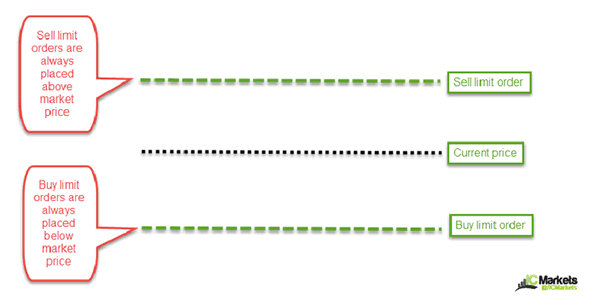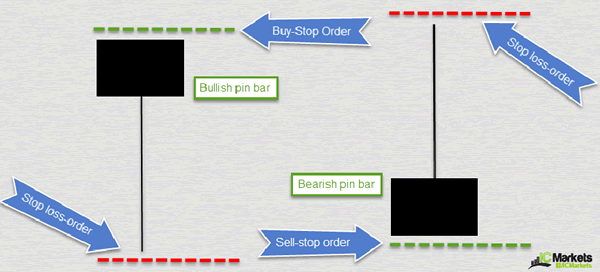Have you ever found yourself unsure of what order to use, or where tocorrectly position it? If you have, then this article will help inproviding a good foundation. It’s surprising how often we find tradersthat do not understand even the most basic entry order techniques, yetthey feel they’re ready to tackle the live market. Make sure that youfully understand and are COMFORTABLE with your broker’s order systembefore stepping into a live trading environment.
With that said, let’s move on and have a look at some of the basic orders traders can use…
Market orders
This order type is often the first execution order that traders comeacross. Just as its name implies, this is an order that’s executed atmarket and is immediate. This means that if you want to enter or exitthe market instantly, you can use a market order to trade at the nextbest available price. However, you might want to note that in afast-moving market where price can change in seconds, the price canalter substantially between the time the order is placed and the timethat it’s completed/filled. This, fellow traders, is called slippage.
As an illustration, let’s imagine that the EUR/USD is currently tradingat an asking price 1.2121 and has a bid of 1.2120. If you wantedinstant access to this market, then you’d have the choice of eitherbuying at 1.2121 or selling at 1.2120. To exit a position on the otherhand you would, assuming that you’re long, sell the position back to themarket at the next best available price. To cover a short,nevertheless, you simply reverse and buy back the position at market.
The difference between the bid/ask price is known as the spread, which is essentially the broker’s fee/commission.
Limit orders
We’re really fond of this type of order, as it can be positioned awayfrom current market price. A limit entry order is used to either buybelow or sell above market price. It’s also very handy as a take-profitexecution order as well!
With regards to a buy order, let’s say that the EUR/USD is trading at1.3150 and you believe that if price connects with 1.30, the pair willrally. If you’re unable to monitor price, you could elect to set a buylimit entry order at your desired level. So, when/if price strikes thisnumber, a buy order will be executed with or without you being present.
For a sell order, it’s the same but works in reverse. Let’s imaginethat the EUR/USD just bounced from 1.2950 and is heading in thedirection of 1.30. You believe that this number has the potential tohold as resistance, but you’re unable to monitor price. In this case,you could set a sell limit entry order at 1.30 and once price interactswith this number, the order will be filled.
When using limit orders, you’ll only be filled at the price you designate or better.

Stop-entry orders
Instead of setting a buy order BELOW market price as you would do whenusing a limit order, a buy-stop order can be positioned to buy ABOVEcurrent price. It’s just the inverse with sell orders. A sell limitorder would be placed ABOVE current price, whereas a sell-stop orderwould be sited BELOW price.You use stop-entry orders when you feel thatthe unit will move in one direction.
This is a common entry order used by pin-bar traders as per the diagram below:

Stop-loss orders
A stop-loss order, also known as a ‘stop order’ or ‘stop market order’,is an order whereby the trader/investor instructs the broker toautomatically liquidate a position if the instrument advances ordeclines past a certain point.
This is, in our humble opinion, probably the most important order tounderstand! To limit losses, market participants use a stop-loss orderto take them out of the market when they are wrong. And guys, you willbe wrong at times! If you do not have the time to monitor your position,a stop-loss order can really save your skin!
For example, if you’re long at 1.3256 on the EUR/USD and your strategysays that if price crosses 1.3236 that you’re wrong, this is where astop-loss order should be positioned. Once/if price crosses this line,the trading platform will automatically execute an order to sell at thenext best available price (assuming that you’re using a stop marketorder).
In closing
Of course, there are plenty of different orders used by traders everyday. The above four, however, are what EVERY trader SHOULD know beforeconsidering a live trade.















